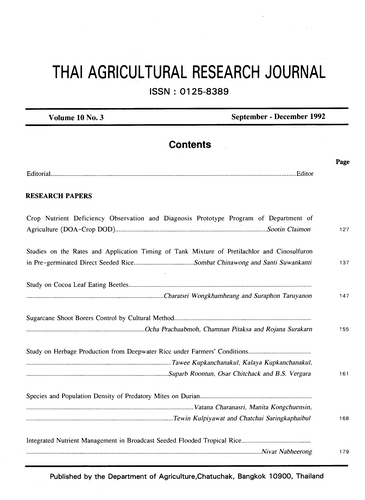Intergrated Nutrient Management in Broadcast Seeded Flooded Tropical Rice
Keywords:
broadcast seeded flooded rice, prilled urea, green manure, Sesbania rostrata, Aeschynomene afrasperaAbstract
Increased irrigated areas, the availability of short-duration modern rices and cost - efficient herbicides, and high labor costs have motivated many irrigated and favorable rainfec rice farmers in southeast Asia to shift from transplanting to direct seeding. Information on fate of N, however, is limited. A field experiment was conducted to evaluate efficient N management in broadcast seeded flooded rice (BSFR). Combined applications of green manure (Sesbania rostrata or Aeschynomene afraspera) and prilled urea substantially reduced N losses of green manure (Sesbania rostrata or Aeschynomene afrapera) and prilled urea substantially reduced N losses by NH3 volatilization.afraspera have the potential to minimize N losses. Exchangeable NH4 -N in the soil was depleted from 21 days after N application. Transplanted rice (TPR) gave relatively higher NH4 -N concentration in the soil during the first 21 days after N application. Treansplanted rice (TPR) gave relatively bhigher NH4 -N concentration in teh soil during the first 21 days after N application than did BSFR. Broadcast seeded flooded rice depleted NH4 -N sources faster than did TPR due to vigorous early growth in BSFR caused by higher plant density and absence of "transplanting shock". However, both planting methods gave similar rice grain yield. Green manure - prilled urea combinations gave grain yields simila rto that with prilled urea applied alone but were significantly higher than that with green manure applied alone. Sesbaniz rostrata aplllied alone as N source generally gave slightly higher grain yield than did Aeschynomene afraspera.
Downloads
Published
How to Cite
Issue
Section
License

This work is licensed under a Creative Commons Attribution-NonCommercial-NoDerivatives 4.0 International License.
Thai Agricultural Research Journal


